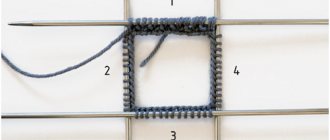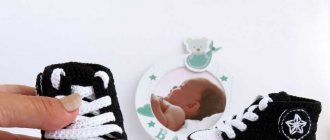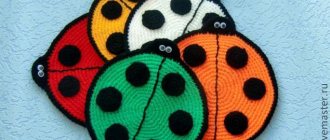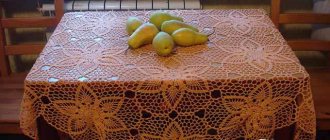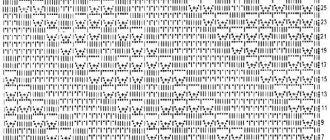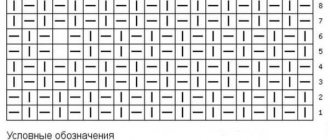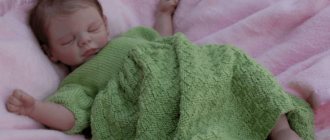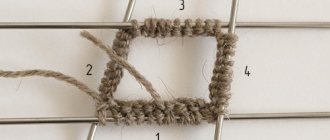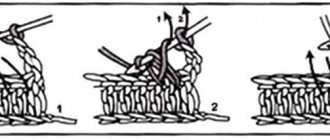A tablecloth often determines the style of a home interior. Ready-made store-bought products can’t always make it look sophisticated and cozy. But a hand-crocheted openwork tablecloth will certainly decorate your home. For beginner knitters, it is better to choose simple patterns from motifs.
In this case, the work will go faster, and you won’t be afraid to make a mistake. After all, correcting a mistake on a fragment is much easier than retying the entire tablecloth. This article with a selection of different options with diagrams and descriptions will help you knit a beautiful tablecloth with your own hands.
Knitted tablecloth “Two Hearts”
Size: 131.5 cm by 131.5 cm.
We will need:
- thin cotton threads – 360g;
- hook No.1.
Description for beginners
To crochet this tablecloth, just study the attached patterns.
For beginner knitters, we provide additional explanations.
Main canvas
First we knit the required number of motifs. In recommended sizes it is 4 pcs.
For each of them, we dial 261 VP with our own hands and for 65 rubles. We knit a fillet pattern according to the image of the diagram. The motif is tied in a circular arch of 7 VP. At corner turns, we increase the number of VPs in the arch to 9 pieces.
Already knitting the 2nd motif, we connect it with the 1st. At the same time, as indicated in the diagram, we replace the middle VP with a connecting column in the central loop of the reciprocal arch.
Harness
For tying, a border of 12 circular rows is used. In every r. We knit the arches according to the pattern, and in the 4th, 6th, 8th, 10th and 12th rows of the binding we make fluffy stubs.
For the edge of the border (see diagram), we alternate a lush stem, an arch, a group of stems with a picot.
Knitted items in the interior
Crocheted napkins and tablecloths will certainly decorate your home. They are mainly made from snow-white cotton yarn.
Openwork napkins
Before taking on a voluminous product, many experienced craftswomen advise starting with a small one. If you dream of making a magnificent holiday tablecloth with your own hands, then it is better to first knit a napkin with knitting needles for beginner needlewomen. Their patterns are identical.
There is an opinion that openwork knitting is mainly done with crochet, but this is not so. Such things can be knitted with knitting needles. Even circular knitting can be easily done with them if you know how. These napkins look thinner and more elegant because crocheting itself is denser and tighter than knitting.
Shawl Flower
- You will need thin knitting needles No. 1.5 and white cotton yarn. You need at least four knitting needles; during the process of expanding the napkin, their number can be increased for convenience.
- Knitting is done from the center in a circle, taking into account rapport. The product contains eight petals. The diagram shows an element of the halves of two petals.
- It is necessary to cast on eight loops on the knitting needles and knit in a circle, as shown in the diagram. Only odd rows are indicated in it; even rows must be performed with knit stitches alone.
- Taking into account the advice and recommendations of experienced needlewomen, where according to the pattern you need to knit three loops from one, it is better to knit two. Knit the front center from the fifth to the tenth row with a crossed knit. Two yarn overs need to be knitted with one knit and one purl. The last row is crocheted alternating 10 air loops and 1 stitch.
- When the product is ready, the napkin needs to be slightly wetted, straightened, and you can starch it a little.
Motif tablecloth
This openwork hand-knitted tablecloth can also be used as a bedspread on a sofa. Dimensions of the tablecloth - bedspread: 91cm by 182cm (border not taken into account).
We will need:
- threads, 100% cotton, 50g per 230m – 700g;
- hook No.2.
Description
For the tablecloth/bedspread you need to knit 98 square motifs according to the image in diagram 1. The dimensions of each are 13cm by 13cm. When knitting the last row, we connect the fragments together - see Fig. 1. The connection points of the motifs are marked with red arrows in cx. Having finished working on the main fabric of the tablecloth - the bedspread, tie the edges in a circle. The border is performed according to diagram 2. Rapport from 1 rub. 8 rubles each repeat to the desired height.
At your request, the border of the bedspread can be knitted either as a separate piece and then sewn on, or knitted and joined to the tablecloth during the knitting process. We knit the corner wedges of the binding according to diagram 3, repeating the height of the border. Then the border is completely sewn together.
Knitted tablecloth from large motifs
The tablecloth has a hexagon shape, dimensions 134cm by 102cm.
We will need:
- threads, cotton – 800g;
- hook No. 1.5.
Description
The knitted tablecloth consists of 24 fragments, each of which measures 20cm by 22cm. We knit the fragments according to the instructions in the diagram with 1p. 16 rub.
For beginners, here is a breakdown of the notation.
We start knitting each fragment with a ring of 8 VP. Then we perform rapports. On сх. one of them is shown, in total you need to complete 8 rapports. Rows on сх. marked with numbers, the number of VPs in them is written under the arches. Knitting each r. We finish with a closing connecting column. Climbing to the new river We perform VP, replacing the column.
When knitting the last p. fragment we connect it with those already knitted. The connection points in the diagram are indicated by arrows. We assemble the main canvas according to the diagram.
Tie the edge in a circle. Border on сх. marked in brown - from 17th p.m. on the 22nd r. We knit picot from 7 VP.
Wash and starch the finished item. Stretch on a horizontal surface, securing to the required dimensions, and dry. Can be ironed while wet from inside out.
Tablecloth made of combined fragments
The dimensions of this tablecloth are determined according to your wishes and depend on the number of knitted motifs.
We will need:
- white threads;
- hook according to the thickness of the yarn.
Description
We knit each motif separately with our own hands. When knitting the edge, in the last row we connect the motifs with each other. Connection points are indicated in Fig. arrows.
Thick tablecloth made of colored motifs
Dimensions: 76cm by 84cm.
We will need:
- threads, 100% cotton, 50g per 85m, white – 300g;
- the same gray threads – 150g;
- the same pink threads – 100g;
- the same blue threads – 50g;
- hook No.6.
Scheme
We knit the motifs with our own hands according to the pattern.
Density: the hexagon is 12 cm along the edges, 13 cm at the vertices.
Description
When knitting fragments, consider how many elements you need to get with a blue center, and how many with a pink center. There should be 25 in total with a pink center, 12 with a blue center.
We start with a chain of %VP. We close it in the SST ring. Next, we perform circular knitting according to cx. Every r. we start with VP and complete the SST in the outermost initial VP or in the 1st paragraph of the circle. R.
We knit once with 1p. 5 rubles each, with the 1st and 2nd rows knitted in blue (pink), 3rd row. - gray yarn, 4th and 5th rows - white yarn. Connecting a new thread we make 1 connection. stlb.
Assembly
We lay out the fragments with the wrong side up according to the pattern and sew them together with white threads. When sewing, insert the hook only behind the front walls of the edge loops.
Knitted tablecloth, models from the Internet
Square tablecloth knitted
- Designer – Herbert Niebling
- Published: Beyer Bunte Reihe Band 7014, Beyer Kunststricken: Heft 4
- Burda 305, Alles aus Garn: Kunststricken Folge 2
- Anna, 04/1984
- Dimensions: 52 x 52 cm
Material and tools for knitting a tablecloth:
- 40 g yarn MEZ-Glanz No. 60
- Two sets of double needles No. 1.25 – length 21 cm
- Hook No. 0.6 mm or 0.75 mm
Tablecloth knitting description:
Cast on 8 loops and join into a circle. Distribute the stitches onto 4 knitting needles and knit 4 rows. Next, knit the tablecloth in accordance with pattern A - repeat rapport 4 times. From three yarn overs lying next to each other, knit 10 loops each (knit alternate knit and purl loops). After row 117, knit 4 rows. In the first front row of the tablecloth, 8 times after every 65 loops from the broach between the loops of the previous row, knit one front crossed loop. After these increases there are 532 stitches on the needles.
Make the teeth of the tablecloth according to pattern B. On each side, repeat the rapport 7 times, then for the corner, make a pattern to the left of the bold line (there are 6 leaf motifs in the corners - see photo). After the 34th row (front row), close the loops with a crochet hook, knitting 12 chain loops between single crochets. Yes, 4 knit rows without increases (this is at the very beginning of knitting, after 8 stitches were distributed on 4 knitting needles), that’s right, I was also surprised, but I knitted it, maybe not 4, but 3, I don’t know for sure , it’s hard to count them there.
Girls, it turns out that it’s fun to knit a square on 4 knitting needles!
Just a hint (there is no such mark in the description of this particular tablecloth, but in the general recommendations for knitting napkins-tablecloths-shawls on 4 knitting needles): since we knit in a spiral, it’s not difficult to get lost and lose the beginning-end of the circular row, so in one of the corners let the marker hang all the time, move it as the fabric increases, closer to the knitting needles.
He will tell you that you are already on the fourth needle and it’s time to move on to the next row of the pattern. And one more thing: in the tablecloth diagram there is a repeat for one knitting needle; it is knitted the same way on all four knitting needles.
Empty cells in the diagram do not mean absolutely anything, and the numbers in an empty cell (or in the middle of several empty cells) mean the number of knit stitches that need to be knitted between other characters (for example, between two yarn overs).
Tablecloth knitting pattern
Square tablecloth knitted
Knitting patterns
Beautiful tablecloth knitted in peach color
Knitting pattern
Knitted round openwork tablecloth
Tablecloth knitting pattern
Red tablecloth knitted
A bright and beautiful tablecloth will decorate your home for the holiday. Knit it from cotton or cotton and rayon. Don’t forget to wash the finished model and block it when drying. This is the only way to give the product a finished look.
Tablecloth knitting pattern
Yellow tablecloth knitted
A very beautiful tablecloth; skirts and dresses are knitted based on it.
Tablecloth knitting pattern
Openwork tablecloth knitted
Tablecloth knitting patterns
Square tablecloth by German designer Herbert Niebling
Size 90-90 cm. The tablecloth is knitted from 200 g cotton yarn (210m/50g) with knitting needles No. 2.5.
Tablecloth knitting pattern
Since most of the patterns are without translation and symbols, we present several options for designating loops when knitting:
Tablecloth made of melange yarn
Dimensions: 96 cm by 60 cm (border not included).
We will need:
- melange yarn in pink colors – 500g;
- white yarn, 100% cotton, 100g per 565m – 200g;
- hook No. 1.5.
Scheme
Density: large motif has Ø12cm, small motif has Ø2cm, border height 7cm.
Description
Large fragments
We start the large element with a chain of 12 VPs. We close it in a ring, knit 3 VP lifts and then perform circular knitting according to cx. 1. Starting a row with 3 lifting VPs (replacing 1 Sts), we end it with Sts in the 3rd lifting VPs. And if the beginning of the row is performed with 1 VP of lifting (= 1 StBN), then its completion SST should be in this VP. The diagram shows all the rows; further knitting of fragments is carried out by analogy.
We connect the fragments to each other when knitting the edges, in the last row.
The connection points are indicated for beginners by arrows in cx. We knit 36 fragments with our own hands using melange threads and connect them to each other. Next, knit 28 fragments with your own hands using white threads. We place them in a circle, connecting them to each other and attaching them to the melange fragments.
As an interior detail
Knitted tablecloths are not just a beautiful table cover, but also a masterpiece of handicraft. And by adding a few design techniques, you can emphasize the magnificence of the knitted pattern. For example, the best way to do this is to cover the table with a fabric that matches the color scheme with the interior of the room. And cover the top with a knitted tablecloth. Against the background of a plain fabric, the pattern will be clearly visible and this combination will look impressive and stylish. Or lay a tablecloth of a suitable color on a white fabric.
Knitted tablecloths are suitable for different styles of room interior. For example, for an interior designed in Provence and country style, a knitted tablecloth with clear geometric patterns and laconic images is more suitable.
Related article: Casting off loops with knitting needles with an elastic edge: video for beginners
A knitted tablecloth will fit very organically into the classic style of the interior. And if you choose a warm shade of threads, this will add nobility and grace to the product.
In rustic and eco-style, knitted tablecloths are simply a necessary detail that will help stylize the room. Knitted tablecloths over rough linen or burlap look especially stylish.
In shabby chic and vintage styles, crocheted tablecloths look charming and cute. Especially if you knit them from threads of delicate colors or add colored details. Knitted interior details add luxury to these styles.
Knitted tablecloths look great on forged and wicker garden furniture. In summer it is so nice to have lunch or evening tea in the garden, among the greenery and flowers in the open air. A knitted tablecloth with floral motifs will add romance and harmony.
Knitted tablecloths will be a successful addition to the overall picture of the interior in many styles. It will be great if, in addition to the tablecloth, you add a few more knitted decorative elements. This will help to organically fit in and dilute the design, and in tandem become a full-fledged part of the interior. Knitted covers on chairs and sofas and decorative pillows look good.
